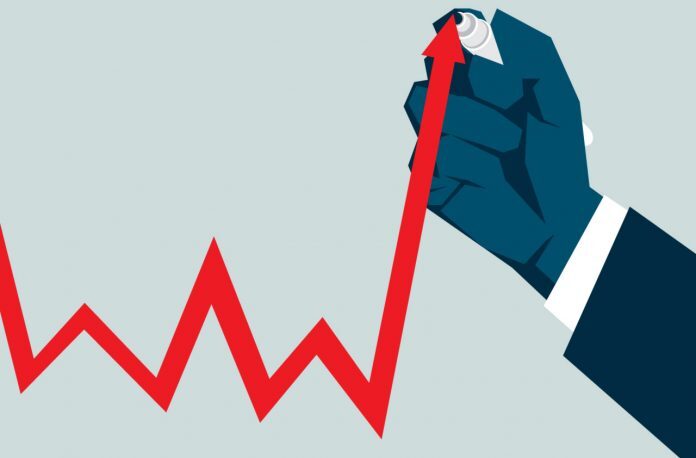In what has been a record studded stint for the Dar-led finance ministry, Pakistan has broken yet another record. This time around it is a 76 year record for highest ever YoY inflation. The CPI index rose by 37.97% (approx. 38%) in May for the first time.
Sadly breaking records of underachievement and detriment, also proceeds to break the back of citizens. The already poverty-stricken public of Pakistan sits helpless, as they see the value of their savings amount to nothing over the period of only one year. With 38% in May and a similar figure in June, Pakistan is all set to end FY23 on an average inflation of 30%.
This information was made public in the monthly data released by Pakistan Bureau of Statistics (PBS) on Thursday. The alarming figure highlights a continued upward trend in the country’s inflation, surpassing the finance ministry’s already pessimistic projection of 34-36% for the same period. The ministry had earlier anticipated a gradual decline in inflation due to the expected easing of international commodity prices and its positive impact on countering currency depreciation.
According to the ministry of finance, there is more at play than the global commodity prices that has contributed to the increase in prices over the previous year. It includes damages caused by floods, disruptions in supply chains, macroeconomic imbalances leading to currency devaluation, and prevailing political uncertainty.
Previously, Pakistan experienced its highest ever year-on-year inflation percentage in April at 36.4%. The measurement of inflation is based on the Consumer Price Index (CPI), which comprises a basket of products and services divided into 12 major components with varying weights. The change in the price of that basket on a monthly and yearly basis hence derives the inflation.
Even though the yearly inflation rate is high, the latest data reveals a month-on-month rise of 1.58 % in May. Within this period, the prices of vegetables, pulses, and chicken witnessed the most significant increases.
According to the PBS, the categories with the highest year-on-year increases were alcoholic beverages and tobacco (123.96%), recreation and culture (72.17%), and transport (52.92%).
In the food group, notable price hikes in May compared to the previous year were observed in cigarettes, potatoes, wheat flour, tea, wheat, eggs, and rice. In the non-food category, items such as textbooks, stationery, motor fuels, washing soaps, detergents, and matchboxes saw significant price increases.
The Consumer Price Index for urban areas recorded a year-on-year increase of 35.09% in May, while rural areas experienced a higher inflation rate of 42.18%. With the current rise in the CPI, the average inflation for the fiscal year from July to May has reached 29.16%, compared to 11.29% in the previous year.
What does 38% mean?
Simply put, a 38% inflation means that the value of 1 rupee is 38% less than it used to be. Meaning that you would have to spend Rs. 1380, to buy something that you would have otherwise bought for Rs. 1000 in May 2022. But it is not as simple. The CPI consists of a number of items, most of which are not an inherent need for those at the lowest level of the Maslow’s hierarchy of needs, i.e. those below the poverty line.
Right off the bat, the rural areas, which house the majority of the financially challenged households, have a 4% higher headline inflation rate. Within that, the food inflation amounts to 51.4%. This gets worse if one gets into the details of the food inflation. The rural figures for YoY change in the prices of wheat is 100.5%, for eggs it is 88.3%, for rice 86.3% and for spices is 40.8%. The urban figures for the same items are comparable.
These and most of the earlier mentioned, highly affected items are basket goods for household usage. The most vulnerable get hit the most with this inflation onslaught. Especially, when the minimum wage remains stagnant, and unemployment stands at more than 6%.
Who to blame?
According to the government, the alarming inflationary pressures in Pakistan have been attributed to the fiscal adjustments demanded by the International Monetary Fund (IMF). These adjustments were necessary to unlock stalled funding. However the fund is still nowhere to be seen.
“Pakistan’s economy experienced 0.29% provisional GDP growth in the fiscal year 2022-23 on account of many challenges emanating from the uncertain external and domestic economic environment. Despite attempting to curb inflation by slowing down the economic growth, Pakistan ended up landing at the worst possible outcome, where inflation wasn’t effectively curbed, but the growth was halted.
“The challenges triggered CPI inflation to remain on a higher trajectory despite monetary tightening primarily due to the rupee depreciation. External payments also remained burdened due to lesser foreign exchange inflows,” the ministry states, sheepishly in its report.
The skyrocketing inflation poses significant challenges for the country’s economy, impacting the purchasing power of consumers and exacerbating socio-economic disparities even further. And the question that still befuddles the average Pakistani is, who should they blame for his economic condition?
























